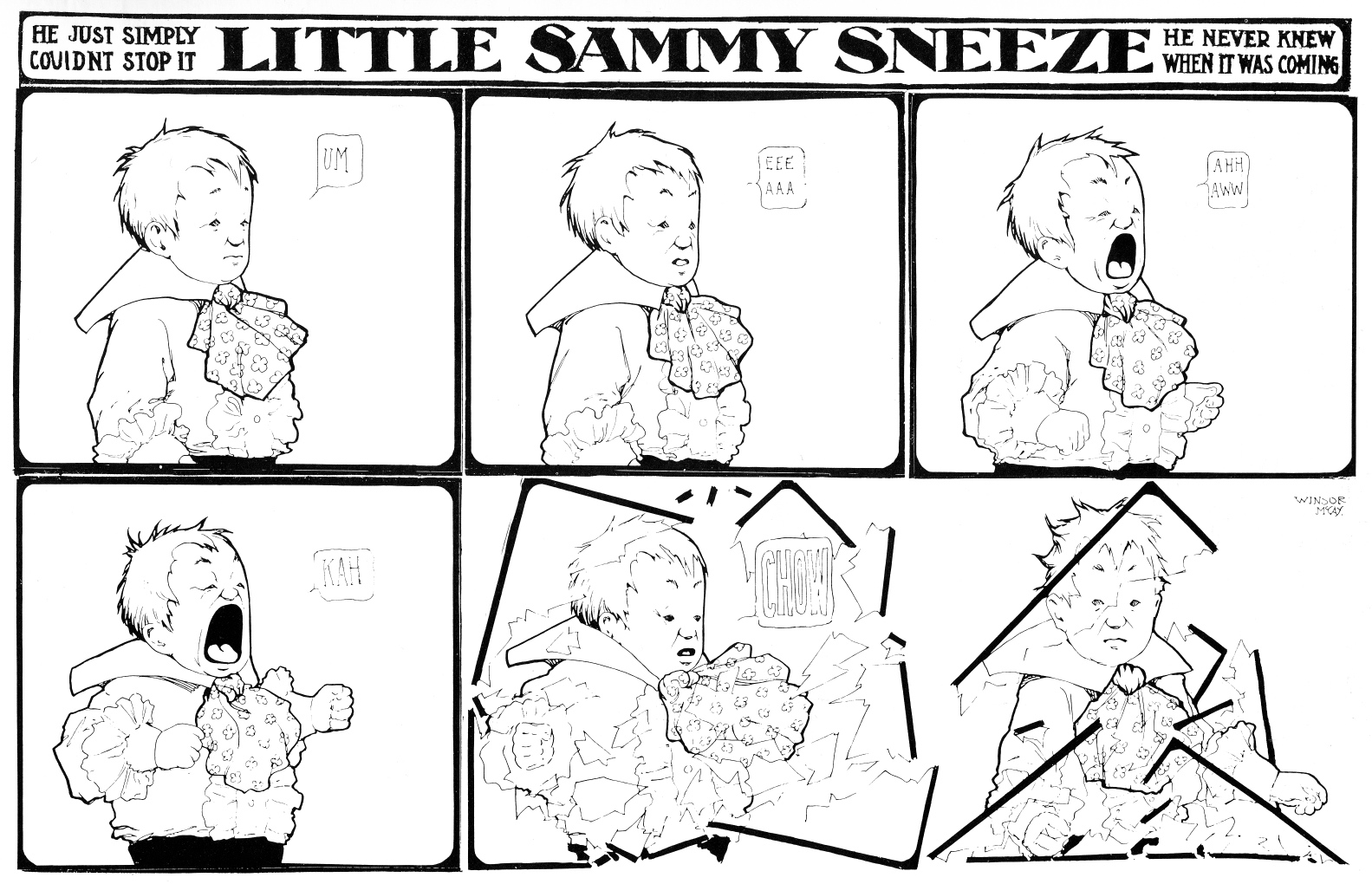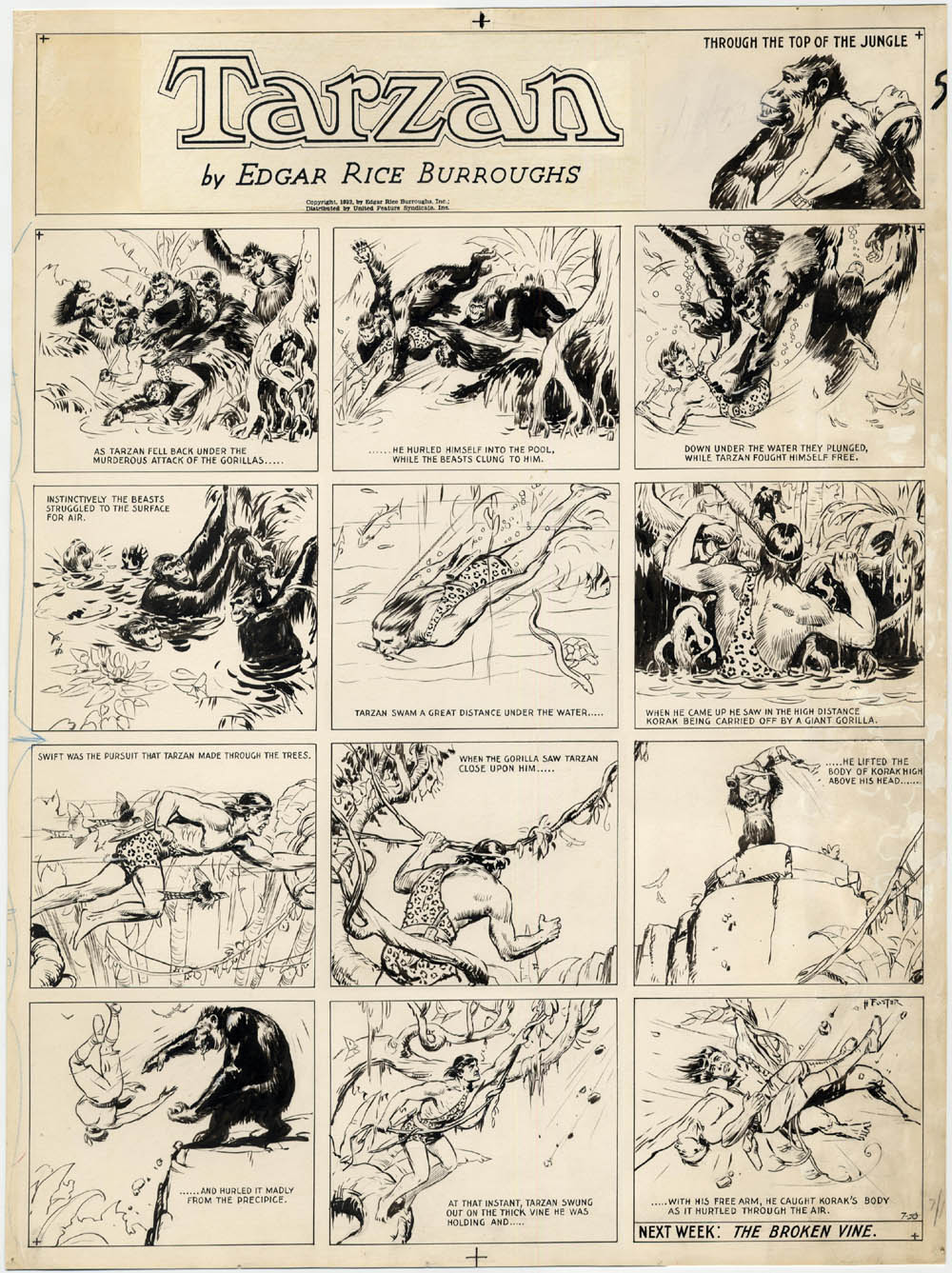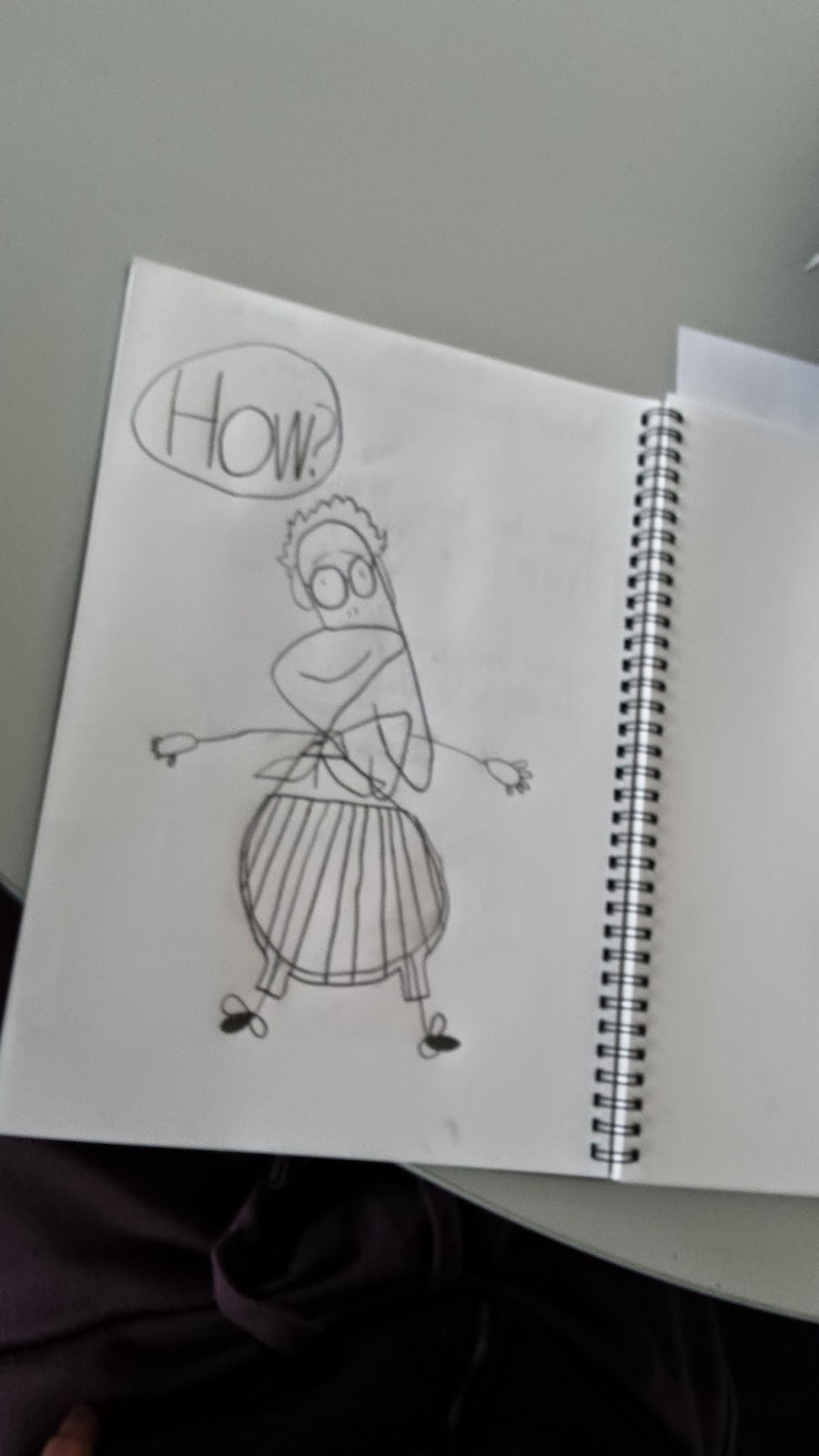Joseph Pulitzer's 'New York world' became the most popular newspaper primarily because of the work of Richard F. Outcault and his 'Yellow Kid' cartoon.
In this example, 'What they did to the dog catcher', you can see the incredible amount of information packed into the image.
In the cultural melting pot of New York, the only language everyone shared was cartoons. But the most important thing is the inclusion of dialogue on the 'Yellow kid's' shirt.
This was the start of captions, and a key moment of comics developing from still images to a narrative.
Not only is there a sequence of action, the sounds of the sneeze has been depicted phonetically. This was a crucial moment as the focus became the motion rather than the story and would become the dominant form of comics for the next 50 years.
Then, Krazy Kat, by George Herriman in 1943 expanded on this idea.
Then, Krazy Kat, by George Herriman in 1943 expanded on this idea.
Spelling doesn't matter. The language is the image, not the words.
'Spelling is deliberately wrong to make the reader imagine the sound' -- Damien.
Parallel to this development in comics, we have the Adventure Strip.
Then in 1928 Hal Foster made the Tarzan comic strip, an adaptation of the adventure novels by Edgar Rice Burroughs, Unlike the cartoon work we have seen so far, these panels are framed like a film, with multiple views of the action, and there was much more realism to the characters. This is also a good example of the 'democratic strip,' where each panel is the same size and the action is spread out sequentially. Text however, was limited primarily to the caption narration.
Then in 1928 Hal Foster made the Tarzan comic strip, an adaptation of the adventure novels by Edgar Rice Burroughs, Unlike the cartoon work we have seen so far, these panels are framed like a film, with multiple views of the action, and there was much more realism to the characters. This is also a good example of the 'democratic strip,' where each panel is the same size and the action is spread out sequentially. Text however, was limited primarily to the caption narration.
But the beauty of comics is that they don't have to be driven by a gag or adventure, they can be about pure imagination.
In this Calvin and Hobbes we can see the combination of both streams of comic history. There is the action of Tarzan, as well as the gags of Krazy Kat. But there is also something else, something more poignant--something that comics can do perhaps better than all other art forms. In this Calvin and Hobbes, the focus is on Imagination
Step one. Scribble.
What do you do with a mess? Find beautiful things.
Step two. Swap and create. That is, make a character from the mess.
Step three. Give thought or voice to the character.
Step two. Swap and create. That is, make a character from the mess.
Step three. Give thought or voice to the character.
The musician Brian Eno, knew that sometimes it is the doodles and scribbles an artist makes that hold true creativity. The idea is perhaps best summed up by his quote, "Honor thy error as a hidden intention"
In his Oblique Strategies, Eno developed a more methodical way of bringing this out.
In his Oblique Strategies, Eno developed a more methodical way of bringing this out.
Lets have a go as a class.
Table 1, is my character a Man woman?
Woman
Table two, is she short, tall?
Short--but with high heels.
Table three? Hat
Yes, and and she has a mat.
Table two, is she short, tall?
Short--but with high heels.
Table three? Hat
Yes, and and she has a mat.
Table 4, what else?
She has a cat.
She has a cat.
So now we have a short, fat woman with a hat and a mat and a cat.
Now over to the students. Table one has to make a panel of her walking. Table 2, she falls over, Table 3, she is laying on ground with Cat on head. Table 4 a crane lifts her up again.
The students in their small groups first sketched out their action, then refined their panels.
Now, extend the story in your own books--give us 4 more panels of our cat lady coming home, getting dinner, and going to sleep.
These sketches need inking.
Now lets step back and look at the pros.
The students were given the homework task of collecting at least 2 images from comics they love. Printed out and stuck into their books, it was time to analyse what they saw.
The two questions of analysis Bernard asked:
1.What is the line quality of your comic, how might it produced?
2. Describe the shapes in your examples. Are they proportional or more comic?
Now finally, see if you can copy the style of the image.
Now finally, see if you can copy the style of the image.
Next week, expanding from a strip to a page.






















































No comments:
Post a Comment